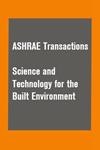先进空气净化技术在多个医疗机构的临床和环境影响
IF 1.6
4区 工程技术
Q3 CONSTRUCTION & BUILDING TECHNOLOGY
Science and Technology for the Built Environment
Pub Date : 2023-10-18
DOI:10.1080/23744731.2023.2266349
引用次数: 0
摘要
许多设施获得性感染(FAI)引起的病原体是空气传播的,控制它们对预防疾病至关重要。设计了一种先进的空气净化技术(AAPT)来灭活病原体的遗传物质并修复挥发性有机化合物(VOCs)。本研究探讨了AAPT在多个医疗保健环境中对关键指标的影响。AAPT安装在一家医院的外科楼层(achm - msf)、第二家医院的麻醉后护理病房(PACU)、重症监护病房(ICU)和外科医疗病房(MS)以及一家老年生活设施(SLF)的记忆支持病房的供暖、通风和空调(HVAC)管道系统中。在所有装置中,控制区域仅通过高效微粒空气(HEPA)过滤来保护。空气中真菌水平、空气和表面细菌水平以及VOC水平随着AAPT的安装而下降。AAPT去除空气中传染性病原体,减少表面病原体和挥发性有机化合物。AAPT保护的ACH-MSF和SLF记录了改善的临床和经济指标,包括患者住院时间减少39.5%,成本节省改善23%,fai减少39.6%。目前的研究结果支持了室内环境质量影响健康的假设,并有可能应用于不同的室内环境。本文章由计算机程序翻译,如有差异,请以英文原文为准。
The Clinical and Environmental Effects of an Advanced Air Purification Technology in Multiple Healthcare Settings
Many facility acquired infection (FAI) causing pathogens are airborne and controlling them is critical to preventing illness. An advanced air purification technology (AAPT) was designed to inactivate the genetic material of pathogens and remediate volatile organic compounds (VOCs). This study explores the effect of the AAPT on critical metrics in multiple healthcare settings. The AAPT was installed in the heating, ventilation, and air conditioning (HVAC) ductwork of a hospital’s medical surgical floor (ACH-MSF), a second hospital’s post-anesthesia care unit (PACU), intensive care unit (ICU) and medical surgical (MS) unit, and in a senior living facility’s (SLF) memory support unit. In all installations, the control area(s) were protected only by high efficiency particulate air (HEPA) filtration. The measured airborne fungal levels, airborne and surface bacterial levels, and VOC levels decreased with installation of AAPT. The AAPT removed infectious airborne pathogens and reduced surface pathogens and VOCs. The ACH-MSF and SLF protected by the AAPT documented improved clinical and economic metrics including a 39.5% decrease in patient length of stay, 23% in cost savings improvement, and a 39.6% decrease in FAIs. The current findings support the hypothesis that indoor environmental quality impacts wellness and has potential applications to diverse indoor environments.
求助全文
通过发布文献求助,成功后即可免费获取论文全文。
去求助
来源期刊

Science and Technology for the Built Environment
THERMODYNAMICSCONSTRUCTION & BUILDING TECH-CONSTRUCTION & BUILDING TECHNOLOGY
CiteScore
4.30
自引率
5.30%
发文量
78
期刊介绍:
Science and Technology for the Built Environment (formerly HVAC&R Research) is ASHRAE’s archival research publication, offering comprehensive reporting of original research in science and technology related to the stationary and mobile built environment, including indoor environmental quality, thermodynamic and energy system dynamics, materials properties, refrigerants, renewable and traditional energy systems and related processes and concepts, integrated built environmental system design approaches and tools, simulation approaches and algorithms, building enclosure assemblies, and systems for minimizing and regulating space heating and cooling modes. The journal features review articles that critically assess existing literature and point out future research directions.
 求助内容:
求助内容: 应助结果提醒方式:
应助结果提醒方式:


